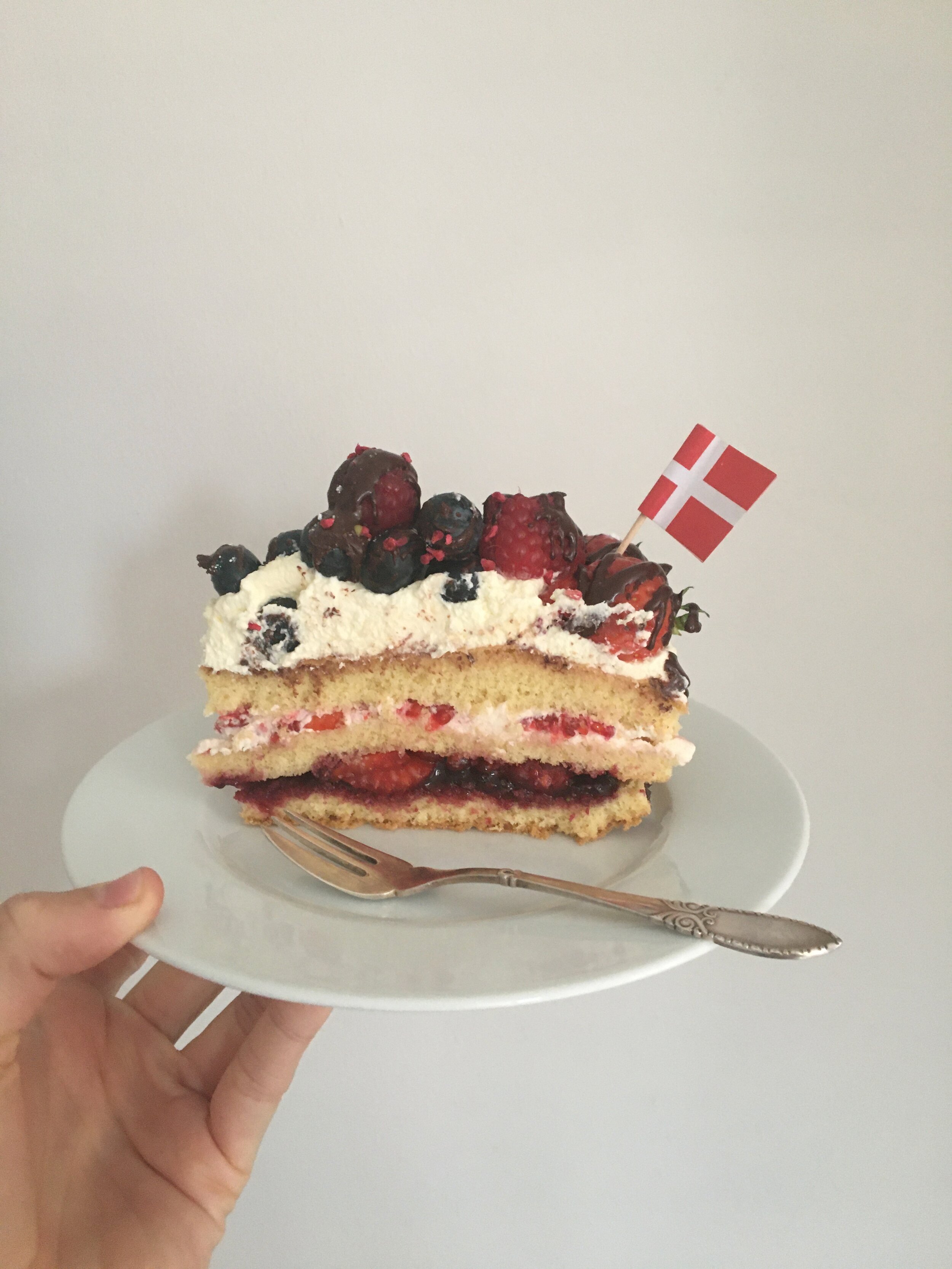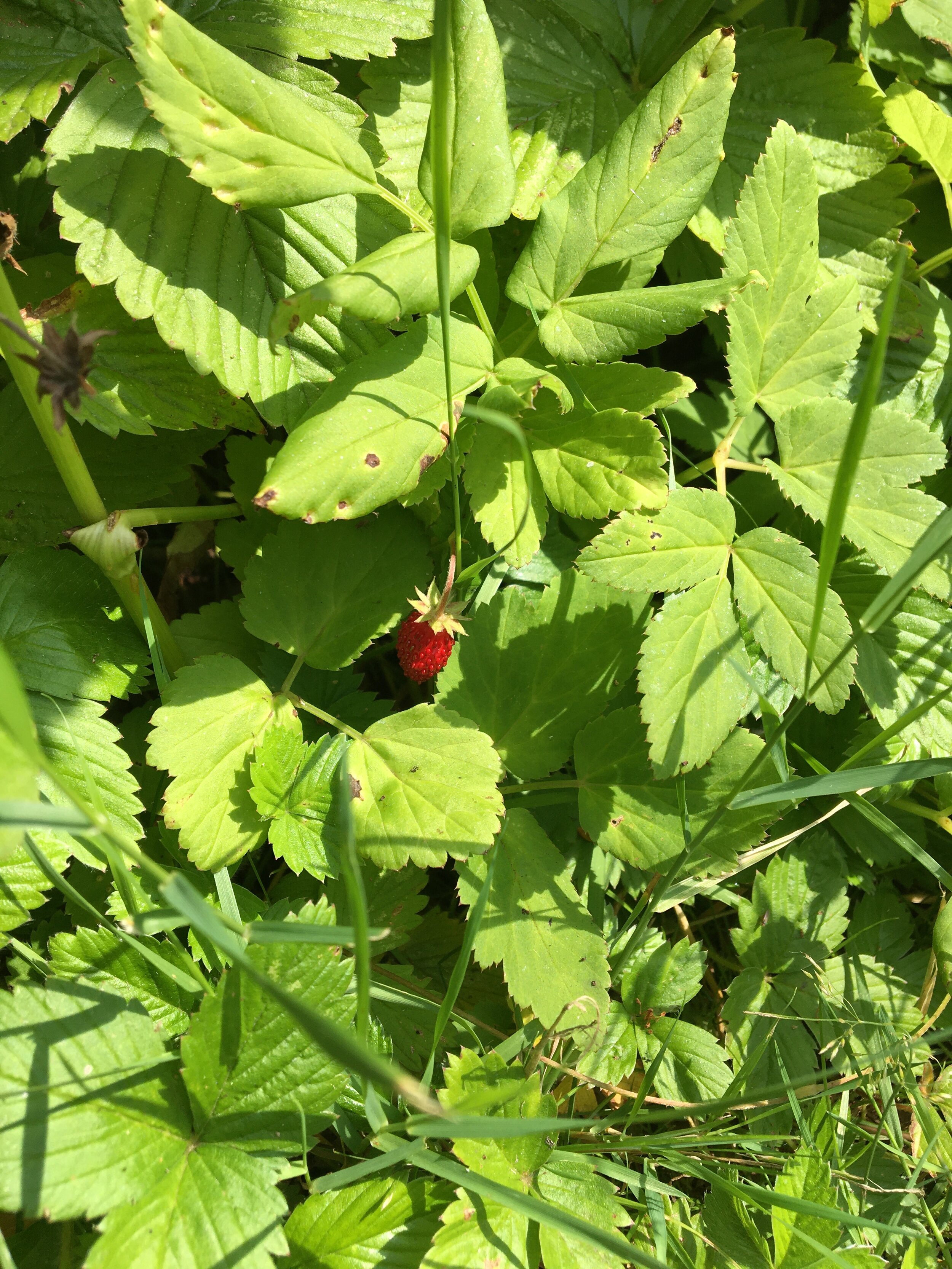Danish Lagkage
‘Lagkage‘ directly translates to ‘Layer Cake’, simply because it is made with layers of sponge cake. In Denmark, it is traditionally a celebratory cake for birthdays and other events, and so is often decorated with Danish flags as a sign of celebration rather than patriotism.
Although the whipped cream should remain a key component, much like meringues you can top the layers with any variation of fruits, nuts, jams and chocolate - I’ve used apricots, plums, raspberries, almonds, freeze-dried fruit in the past. It’s really lovely to fold raspberries into the whipped cream so that it turns pink. As I am currently in Denmark at the height of summer, I wanted to use some of the seasonal Danish fruits - ‘jordbær’ (strawberries) and ‘stikkelsbær’ (gooseberries). I have very fond memories of playing in my grandparents garden, hiding behind the gooseberry bushes while eating the deliciously plump fruits. I decided to make them into a jam with elderflower for this cake. The lagkage tastes best when made the day before and left in the fridge to ‘rest’, so that the sponge can draw in all of the lovely fruit flavours.
Cake base
You can either bake one cake and cut it into three or divide the batter and bake it in three separate tins.
150g white flour
1 tsp baking powder
4 medium eggs
150g caster sugar
1 tsp vanilla extract
Butter for greasing
Preheat the oven to 200 degrees celsius / 180 fan / 400 fahrenheit.
Grease a 24cm diameter round tin with a little butter and line with baking paper - grease three tins if you would rather split the mix, as mentioned above.
Whisk the eggs and the sugar together in a bowl until airy and fluffy.
Sieve the flour and baking powder into the bowl with the egg and sugar and fold in gently until fully mixed, with no lumps.
Pour the mix into the tin - or three tins if you would rather split the mix, as mentioned above.
Put the cake into the oven on the lowest shelf and bake for about 30 minutes until a knife comes out clean.
Take the cake out and leave to cool.
Once cool, slice the cake horizontally so you have three circles.
Cake filling
All of these elements, except the whipped cream, can be swapped out for other flavours. My usual technique is to put jam on the bottom layer, then cream and fruit on the second, followed by more cream and fruit on the top, before drizzling with melted chocolate and chopped nuts.
500g fresh strawberries
500ml whipping cream
50g dark chocolate
Handful of hazelnuts
A jam of your choice - I am using a gooseberry and elderflower jam using the recipe below, but my all-time favourite is blackcurrant jam.
Slice a third of the strawberries into round slices and the rest into quarters.
Toast the hazelnuts on a hot pan for two minutes until the skins are flaking.
Pour the nuts out onto a clean tea towel and roll them inside it to take the skins off.
Chop the nuts into rough pieces.
Whip the cream into soft peaks.
Put the first layer of sponge onto a plate and spread the jam across it.
Then place the second layer of sponge on top of the first and spread a layer of whipped cream across it.
Place the round slices of strawberry across the cream.
Then place the last layer of sponge on top of this and cover with the rest of the cream.
It’s nice to get some height on this layer so top with most of the remaining strawberries, either carefully layering them from the outer edge into the centre, or by casually piling them up.
In a heat-proof bowl over simmering water, melt the dark chocolate.
Once melted, use a spoon to drizzle the chocolate from a height all over the top of the strawberries.
Then scatter the hazelnuts across the top to decorate.
You can add other decorations at this point - some red currants or edible flowers in the centre, for example.
Gooseberry and elderflower jam (makes 600ml jam)
500g gooseberries
450g granulated white sugar
50ml elderflower cordial
150ml water
Put a small plate into the freezer. This will be used to test the setting of the jam once it is made.
Wash and take off the stalks off the top and bottom of the gooseberries.
Put the gooseberries into a pan with the 150ml water and cook on a low heat for 10 or 15 minutes until the fruit has softened and broken down. Make sure to stir throughout.
Add the sugar and continue to cook until it has dissolved.
Once the sugar has dissolved, turn up the heat and boil (just above100 degrees celcius) the mixture for 10 minutes. Keep stirring so that the jam doesn’t stick to the bottom of the pan and use a spoon to scoop off any scum that comes to the surface. Do not let it boil for too long - the sugar will caramelise as shown in my live video on Instagram here
Turn the heat off.
Take the plate out of the freezer, put some of the jam onto it and leave for a few minutes. Then run your finger through the jam - if the jam wrinkles it is set. If not, boil for another minute or so and repeat the freezer plate test.
Once the jam is set, add the elderflower cordial and stir through.
Leave to cool before use and store in sterilised jars.


